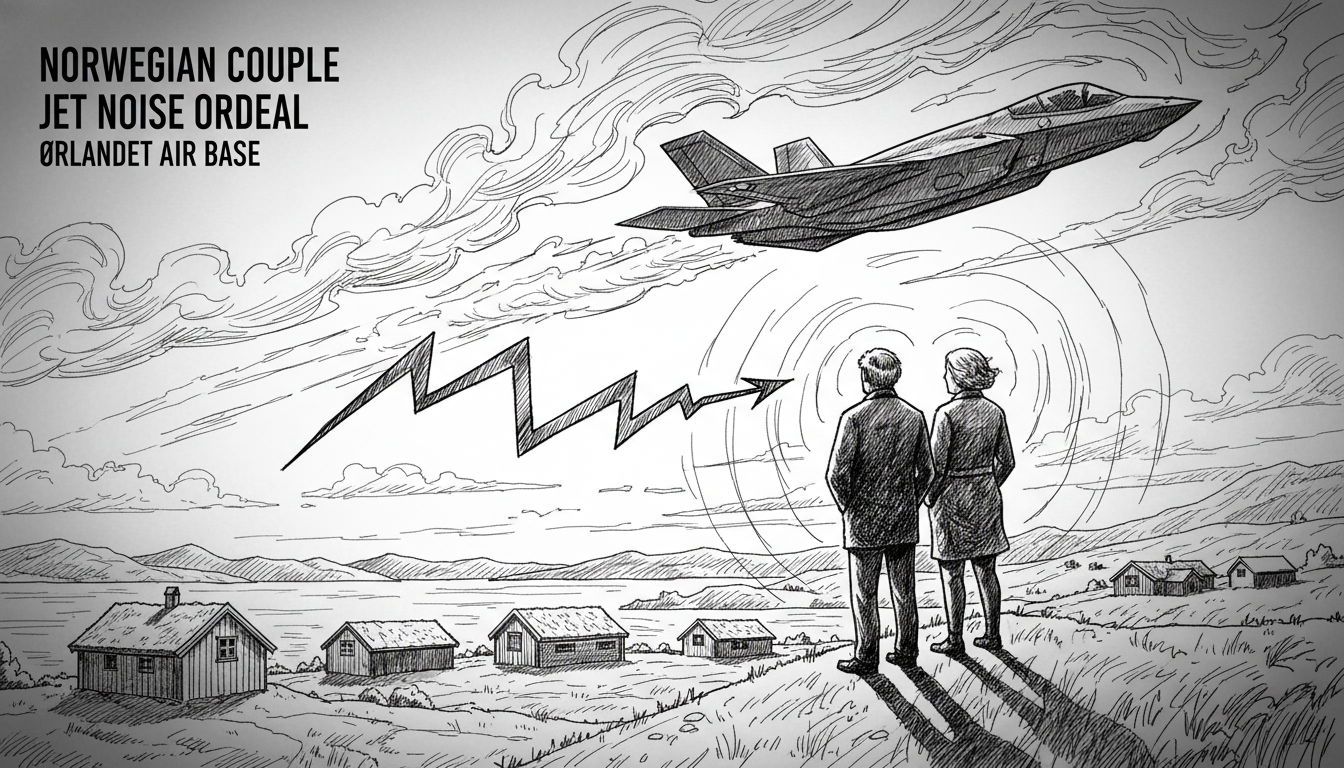A Norwegian couple who already soundproofed their home against military jet noise now faces even louder disruptions as flight patterns change at Ørlandet Air Base. Anja and Geir Yngve Hovde have learned their property will move from the yellow noise zone to the more severe red zone following adjustments to F-35 fighter jet operations.
The changes mean 67 additional properties will fall into the red noise zone, while only 7 properties move out of it. The couple operates a chicken farm on their property and expresses concern about how increased noise will affect both their business and quality of life.
Geir Yngve Hovde states the fundamental problem extends beyond mere inconvenience. He questions how authorities consider the emotional impact on residents facing potential relocation from generational homes. The chicken farm presents particular challenges since ventilation requirements make soundproofing impossible while maintaining animal welfare standards.
Base commander Colonel Ole Marius Tørrisplass acknowledges the difficulty for affected residents but explains the necessary adjustments. Current noise maps developed over a decade ago relied on theoretical calculations about F-35 operations that don't match real-world experience. The military now seeks to create noise maps that accurately reflect actual flight patterns.
The situation reflects broader changes in Norway's defense posture. With up to 6,330 annual departures possible from Ørlandet—including exercises with allied nations—the base's operational tempo increases amid global security concerns. This creates tension between national security needs and local community impacts.
Previous noise zone adjustments led to approximately 10% of the municipality's population relocating through government buyout programs. Around 230 buildings near the base have been demolished, including 130 homes. Whether similar buyouts will occur this time remains uncertain.
Carl Oscar Pedersen, project manager for Defense Construction Service, indicates no automatic repetition of previous processes. All parties—including the defense department, municipality, and construction service—must collaborate on determining appropriate responses. He recognizes residents' desire for clarity about potential buyout options.
The uncertainty creates practical and emotional strain for families like the Hovdes. They want to remain on their farm but worry about future restrictions on property use in red noise zones. The couple also questions how noise levels might evolve beyond current predictions.
This situation illustrates the complex balance between national security requirements and community welfare. While residents generally understand defense needs, the personal consequences create genuine hardship. The defense department will ultimately decide what financial support, if any, becomes available to affected Ørlandet residents.
The pattern of expanding military operations impacting civilian populations isn't unique to Norway. Similar tensions have emerged near bases across Scandinavia as regional security concerns grow. What makes this case particularly challenging is the combination of technical noise adjustments with the very personal impacts on multi-generational family farms and businesses.
